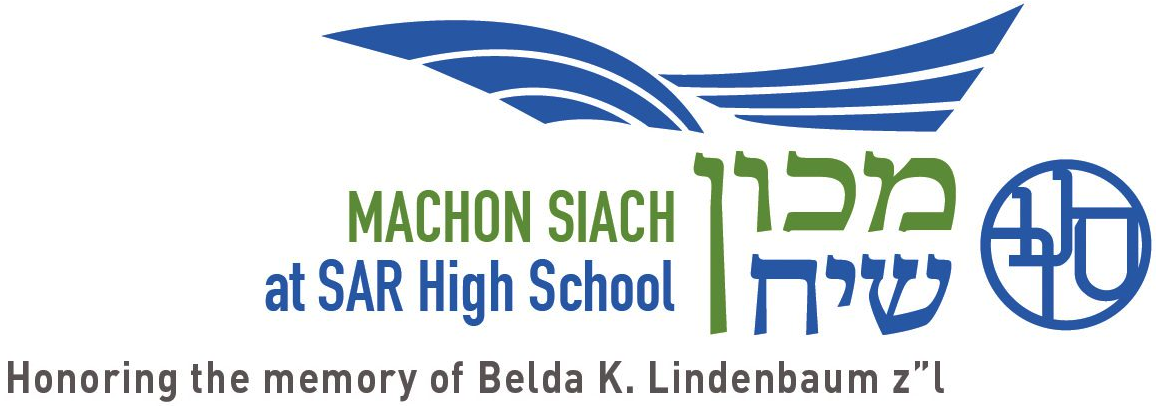
Unpacking the Rabban Gamliel Mishnayot of the Second Half of Mishnah Berakhot 2
Literary Techniques in the Study of Torah Shebaal Peh
In the last century, sophisticated study of Tanakh has exploded within the Modern Orthodox and Religious Zionist worlds, first in Israel and subsequently in the United States. Due to the efforts and contributions of educators, Talmidei Chakhamim, and other scholars there has been an explosion of interest and deep learning of Mikra, integrating traditional and modern methods.1 One of the dominant modes of that learning has come to be known as the literary-theological method which uses all the literary techniques and theories of the close reading of texts to uncover and identify the meaning(s) of the plain sense of the text, while also appreciating its status as dvar Hashem. This methodology looks for the key words, repetitions, literary structures and patterns, wordplay, and intertextualities that are part of the essence of biblical prose and poetry.
In the last three decades, these approaches have been applied, both in academia and in those batei midrash that are open to integrating these approaches into traditional learning, to the study of Mishnah and Talmud study. Scholars such as Professors Yonah Frankel and Jeffrey Rubenstein, and then in the modern yeshiva world, rabbis and academics such as Avie Walfish, Yoel Bin-Nun, and Yakov Nagen have made substantial contributions in opening up this new world of learning. In this context, many of the same literary structures and methods that have been identified in Tanakh have been “discovered” as well in the foundational texts of Torah Shebaal Peh. The discovery of these literary structures, such as the one we will explore in the second chapter of Berakhot, has often yielded insights into the message and meaning of Talmudic passages as a whole. Helping students get into the habit of looking at a perek as an entire literary unit before delving into a specific Mishnah and sugya, as well as utilizing literary methods in looking at the smaller subunits within a chapter, is valuable for several reasons. It can unlock deeper layers of understanding, enrich the classroom learning, and be another goal that students can achieve that will help them feel mastery and accomplishment in the learning of Torah Shebaal Peh.
This brief paper will examine the second chapter of Berakhot, specifically the Mishnayot at the end of the perek, with an eye to uncovering meaning and laying the groundwork for the further discussions that the Talmud builds upon. We begin with a look at the overall structure which connects these Mishnayot into one unit, as well as the numerous phrases that act as connective tissue binding these various Mishnayot.2
Understanding the Rabban Gamliel Mishnayot
The second chapter of Mishnah Berakhot discusses the proper way to fulfill the obligation to recite Keriat Shema. The first few lines of chapter signal a general principle: the obligation to have proper intent (kavanah) in recitation of the Shema. This theme is continued in the second Mishnah, which emphasizes acceptance of the yoke of heaven. In an act of literary enclosure, formally termed an inclusio, the chapter concludes as well on this note: Mishnayot 5 and 8 (with a detour in Mishnayot 6-7 to be explored below) describe whether or not the a groom on the first night of marriage can have proper intent to read the Shema. The middle of the chapter discusses specific modes of saying Shema: audibility, proper pronunciation, and proper sequence of paragraphs.
The last four Mishnayot of the chapter constitute a separate unit within the chapter as they begin (in Mishnah 5) with a discussion of the exemption of a groom from Keriat Shema on the first night of marriage. The Mishnah then moves on into a discussion about the laws of bathing during the first night of mourning (Mishnah 6), and continues to the third Mishnah which discusses laws of comforting a mourner (Mishnah 7). The perek then returns to close the chapter with a ruling about recitation of Shema by a groom on the first night of marriage. This is an example of a common literary structure known as a simple chiasmus:
-
A – Keriat Shema on first night of marriage
- B – Mourning laws
B’ – Mourning laws
A’ – Keriat Shema on first night of marriage
The text closes with the same language or topic it began with, and the middle two sections both focus on a different topic. This literary form of chiasmus (and its variants) has been noticed for the last century by keen readers of the Bible, including many in the traditional community such as Nechama Leibowitz, Yehuda Kiel, Elchanan Samet, and Menachem Leibtag . In many Tanakh classrooms in our community, one often sees educators teaching students to notice this form and unpack its meaning.
The phrase בלילה הראשון repeats itself in the first second and fourth Mishnayot acting as an associative term, connecting the cases of marriage and mourning. It also connects us back to the first part of the perek in which the explanation given for the order of the sections of Keriat Shema is that the first two are applicable at night as well during the day. Keriat Shema in its essence relates to night experience as well as day experience, and therefore Rabban Gamliel recites Keriat Shema even on the night of his wedding. Moreover the phrase לא למדתנו, repeats itself in each one of the first three Mishnayot, indicating a similar recurring trope in which the students of Rabban Gamliel question him about a puzzling practice in which he is engaging. In addition, the first, second, and third Mishnayot are all connected by the use of the phrase איני or אין which is uttered by Rabban Gamliel in response to his students.3
It is clear, then, that the editor of the Mishnayot made a conscious effort to connect all these Mishnayot into a tightly fashioned literary unit. Moreover, students can also be encouraged to see other wordplays that tighten the structure even further allowing for greater recall and connections. For example, in Mishnah 5, אם לא עשׂה מעשׂה. מעשׂה ברבן גמליאל, in which the word maaseh is used in two different ways: first, as a euphemism for marital relations, and second, in its plain sense of a story. Here the lack of masseh in the sexual sense did not prevent Rabban Gamliel from reading Keriat Shema during the masseh – the events that were going on in his life. This language of maaseh also may connect us to the beginning of the entire tractate which also open with a maaseh – a story about Rabban Gamliel’s children returning late in the evening from a wedding and his encouraging them to recite Shema, even if formally the time for recitation had concluded. This drives home the point that for Rabban Gamliel, reciting Keriat Shema, even in circumstances when one might have been seemingly exempt, is of paramount importance and should be done, without looking for dispensations. Finally, the language of Mishnah 8, concluding with the phrase: “lo yitol et hashem” strengthens the inclusio, referred to above, as toward the beginning of the chapter in Mishnah 2 the text states that the essence of Keriat Shema is the acceptance of the yoke of heaven – קבלת עול מלכות שמים, and and the perek closes with the notion than not everyone maybe spiritually able – ליטול את השם – to accept the yoke of God on the first night of marriage. The word shem here is synonymous with the word shamayim. The words are often interchangeable as we find the sages using terms like kevod shamyim – the honor of the Heavens, i.e., God, and a term like kiddush Hashem – sanctifying God’s name. Thus, the word shem is simply another word for shamayim at the beginning of the chapter. Finally, there may be a play on words relating to the desire of the person “likro et Shema” at the opening of this Mishnah, and his being told that not everyone can handle accepting the Shem in these circumstances.
Given all these worldplays, literary structures, and allusions, the deeper educational question is why did Rabbi Yehuda haNasi or the final editors of the tractate choose to present these laws in this fashion – a question that students will no doubt raise and hopefully enjoy tackling directly. One simple path to follow is that the text of the Mishnah may originally have been transmitted orally. As such, this was an easy way to record and remember many of the teachings of Rabban Gamliel in one neat package for recollection. By binding together disparate laws that had a similar structure and using similar phrasing, the teacher could transmit these various laws to students in a coherent fashion for easy recall.
Secondly, the intertwining of these Mishnayot creates a deep juxtaposition of two intense lifecycle events of human emotional experience that often are presented in rabbinic texts and thought in tandem: marriage and the marital act (which in rabbinic thought is ultimately to be directed towards procreation) on the one hand and death and mourning on the other.
Rabbi Joseph B. Soloveitchik4 was wont to note the language of the Rambam in Hilkhot Avel 1:1, based on the Yerushalmi:
ומשה רבנו תיקן להם לישראל שבעת ימי אבילות, ושבעת ימי המשתה.
Moshe Rabbeinu enacted for Israel seven days of mourning and seven days of [wedding] feasting.
This dual takanah, reflects, the Rav suggests, the deep reality of the spectrum of life with its two poles of intense joy and creativity of marriage and the fusion of two individuals that presages the continuity of the generations, and the harsh intense pain of loss and demise of a beloved relative, and the closing of a chapter in a life and of past generations. Halakha wants us to hold both those extremes in our hand and mind and recognize that life is not unbounded joy nor unmitigated pain and suffering. This discussion with students can be very rich and meaningful in its exploration of the range of human emotions and experiences in the life of every human being and how we as committed Jews recognize and integrate that into our halakhic living and commitments.
On a third level one can explore with students through inquiry whether there may be another substantive connection between all four of the Rabban Gamliel Mishnayot that touch on core issues in the entire chapter. Students can be asked to go back and review the Mishnayot of the entire chapter that have been studied and identify what are the key elements and core values that emerge. Through discussion students will hopefully identify some core issues that run through Chapter 2 of Berakhot, such as the interplay between the external act of reciting and performing the mitzvah of Keriat Shema versus the internal experience of the individual during performance of the ritual. As such, issues related to intent versus recitation, proper enunciation or volume of the recitation, order of the recitation of the words, all come to the fore and become the key questions that the Mishnayot and Chazal are confronting and exploring.
In his writings on this perek Rabbi Dr. Avie Walfish has nicely summarized the connections between the four final Mishnayot and the themes of the first half of the perek. He notes that in each case the Mishnah sets up a contrast between societal norms and individual practice. He explains:
In all three cases, Rabban Gamliel defends his conduct with the argument that a distinction must be made between the external norm and its inner meaning. From the perspective of the external norm, a bridegroom should not recite Shema, but from the perspective of the inner meaning, a bridegroom for whom “acceptance of the kingdom of heaven” is a burning need, will of necessity deviate from that norm. A mourner must not bathe, but the intention of this norm is to forbid bathing for pleasure, but not when bathing is a physical-emotional necessity for a particularly delicate person. According to the norm, one shouldn’t receive consolation for the death of a slave, but this is grounded in a negative assessment of most slaves, which did not apply to the case of Tavi. The opening Mishnayot of the chapter also addressed the issue of the relationship between external action (the laws of reading) and internal meaning (concentration of the mind, acceptance of the kingdom of heaven). We see then that the three Mishnayot of Rabban Gamliel fit in well with the central idea of the chapter, illuminating it in a novel and interesting manner. Whereas the Mishnayot at the beginning of the chapter demonstrate how the inner meaning of the mitzvah of Keriat Shema is translated into halakhic norms, the Mishnayot at the end of the chapter examine how inner meaning may lead to a deviation from the halakhic norm. Mishnah 8 examines an additional aspect: Can a deviation from a norm be transformed into a new norm, so that a particular individual can choose between the ordinary norm and the “norm” offered to isolated individuals who wish to opt for it?5
Conclusion
The original foundational text from which all subsequent central sources of Torah SheBaal Peh developed is the Mishnah. Many students are exposed to it in the middle primary grades and then quickly move on to the study of Gemara. As students mature, a wonderful opportunity presents itself to integrate a more sophisticated study of Mishna into the very text of the Gemara that they are studying. Reviewing the entire chapter of Mishna which the high school student will be studying as part of her Gemara learning, during the course of a semester, is a basic desideratum to get a handle on the key issues that will be explored in the Talmud. Moreover, this study also lays the groundwork for appreciating the directions the Talmud went in, as well roads not taken. Sophisticated literary analysis of a perek of Mishna is a tool that can help make the Mishnayot that students learn have greater meaning. In addition, this study helps students appreciate how form and content interact with each other to convey meaning and ideas, especially, regarding a text that was originally conveyed orally. This learning is accessible to high school students, sharpens their close reading of key texts of Chazal and enriches the experience of Talmud Torah.
- Texts Examined in this Paper
Footnotes
- Notable proponents of this approach include Rabbi Mordechai Breuer, Umberto Cassuto, Yehuda Elitzur, Amos Hakham, Nechama Leibowitz, Rabbi Joseph B. Soloveitchik, and Meir Weiss (all zikhronam liverakha), as well as Rabbis Yoel Bin Nun, Yaakov Medan, Shalom Carmy, David Silber, Elchanan Samet, and Uriel Simon, Aviva Zornberg, Yonatan Grossman, Yael Ziegler, and their students.
- Students in most classes can be encouraged and trained to see the repetition of phrases across Mishnayot just as they learn to find keywords and literary connections in a passage in Tanakh.
- There is also an internal literary connection between Mishnayot 6 and 7 in the use of the phrase איני כשאר… אין טבי עבדי כשאר, which ends with the wonderful wordplay off that phrase: כשר היה, which sounds like the word כשאר.
- I heard the Rav discuss this theme directly at his Tuesday night parshat hashavua shiur on Parshat Vayechi held at Yeshiva University in early January 1981.
- Avie Walfish for the Drisha Mishna Project, Accessed on July 13, 2022. The website has been reorganized and Rabbi Dr. Walfish’s writings on Mishnah Berakhot are no longer available there.



